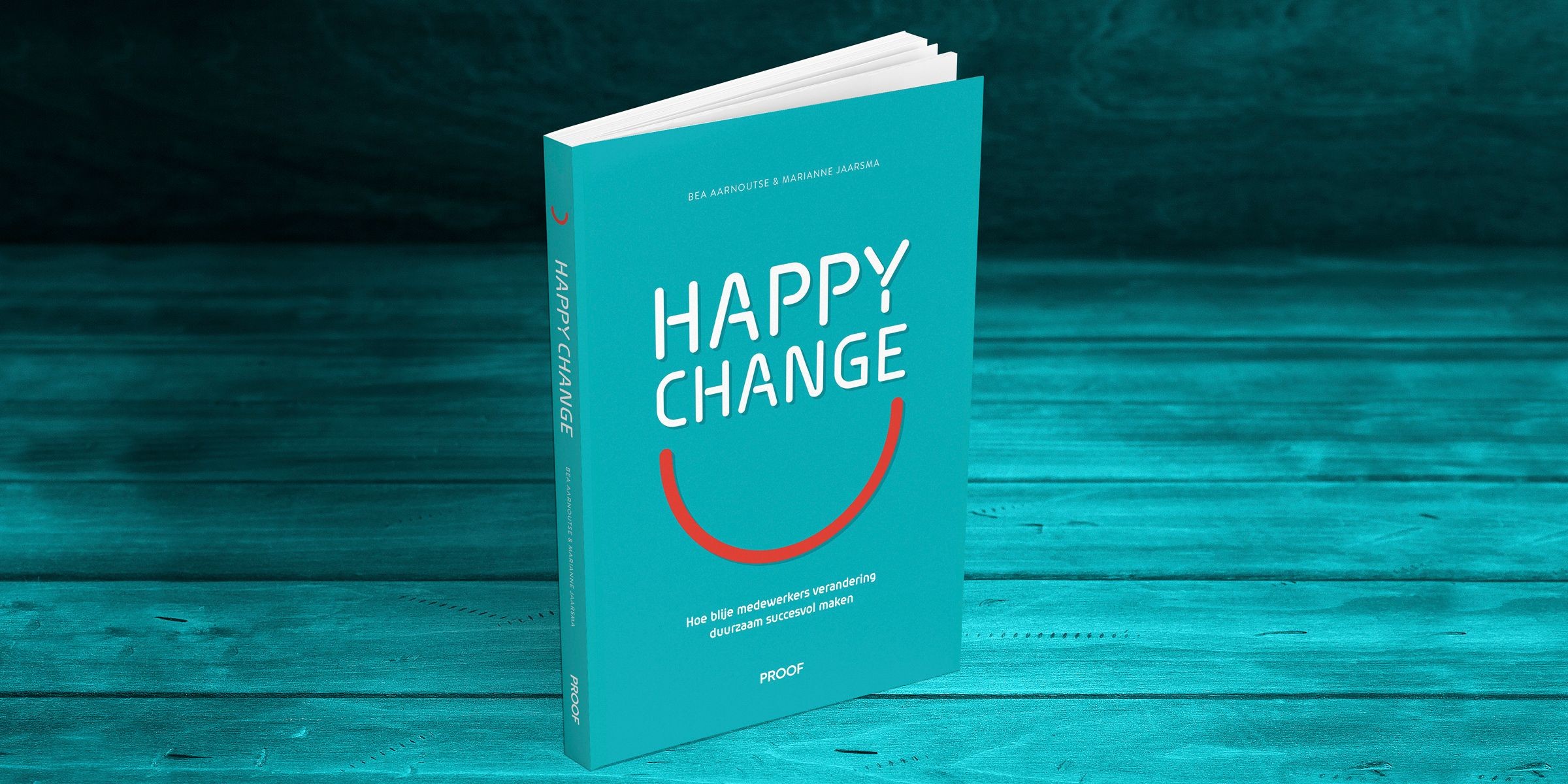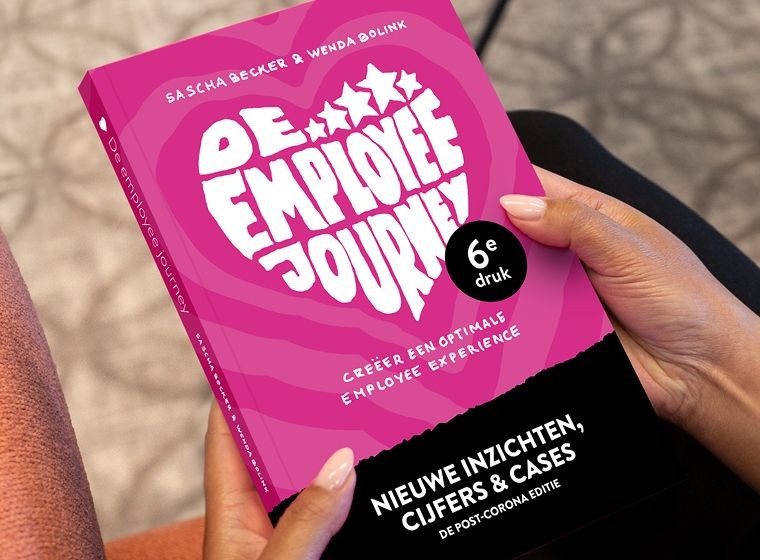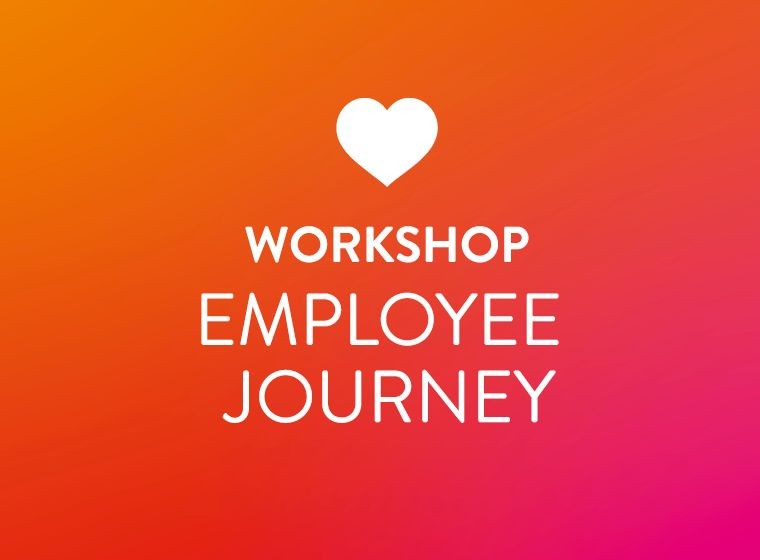5 questions about PROOF’s sixth book: Happy change
The organisations that succeed in the future will be those that show they can constantly adapt to a changing context. They will also put their employees first because happy employees = happy customers = more business value. Because whether big or small, change only succeeds when your employees are happy, informed, and intrinsically motivated and equipped to contribute to success.

This belief is central to PROOF’s sixth book, Happy change, which is out now (click here to order it). In it, we discuss how you can help your employees to support change by fostering knowledge, willingness and ability. The book includes:
– facts, figures and in-depth theory
– practical examples from change practitioners
– tools to help you start right away
Curious to know more? Co-authors Bea Aarnoutse and Marianne Jaarsma answer five questions about their new book.
Happy change? Where did you get the idea for the title?
“We believe that an organisational change has a better chance of success if employees feel comfortable with themselves and are willing and able to do the right things at the right time. So, positive change starts with ‘happy’ employees. Hence the title, Happy change. When you place your employees at the heart of an organisational change, you think about their position in everything that is going on. You know where they are in the change curve, you know what obstacles are preventing them from making a positive contribution to the ambition of the organisation, and you know what they need to help them to participate in the desired change. None of this is one-size-fits-all – it requires customisation. Writing the book confirmed our belief that successful organisational change begins with happy employees.”
You talk in the book about knowledge, willingness and ability. What do you mean with this?
“We wanted the book to consider organisational change as a whole. Knowledge, willingness and ability are central to genuinely involving employees in organisational change. Employees who know the organisation’s change ambitions and goals, who are willing to contribute to achieving those ambitions and who are in a position to be able to do so (so who have the right competencies) are worth their weight in gold. This approach transcends Communication and HR as individual disciplines. Instead, they must drive change together. Putting employees at the heart of change requires a common conviction and shared responsibility from Communication and HR. It also requires, and this is essential, support from the top of the organisation, and empowered managers and ambassadors who are happy to inspire, activate and motivate their colleagues. In our opinion, an organisation must invest in the knowledge, willingness and ability of its employees in order to be able to respond to developments in the outside world and to create sustainable value for all stakeholders involved.”
Leadership and internal communication are recurring themes throughout the book. Why?
“Of the six influencing factors that ensure an optimal employee experience, leadership and internal communication are the two we emphasise in our book because they are the most important ones when it comes to building an aligned workforce. Managers and team leaders are closest to the employee and have a major influence on how the employee feels about his or her work. In our book, we emphasise the importance of good leadership communication and the need to equip and facilitate managers in their role as well.
“The role of internal communication is so much more than just sharing information on a regular cycle. Internal communication, done well, guides employees because it explains to them, in appealing and recognisable ways, why change is necessary. It also facilitates and equips them to act. Internal communication makes abstract strategies concrete by highlighting good examples and celebrating milestones. And internal communication energises by offering pioneers a platform, by encouraging employees to take action and by connecting employees in the pride felt within the organisation.”
And what about the other influencing factors?
“These are also important in making employees feel good about themselves and certainly need to be handled properly. These factors are also reflected in the book, woven through the various chapters. The corona crisis has exposed a lot of pain-points and issues of concern. Not only has it become clear that managers play an essential role throughout the employee journey and that internal communication is important, but we have also been reminded that social dynamics are essential, too. Work has an important social function and mutual contact with colleagues is very important. In addition, continuing to invest in the personal and professional development of employees remains essential. Our corona research with Motivaction showed that employees feel they are standing still. Nobody wants that. So vitality has become an important topic in every organisation: how do you keep yourself physically and mentally fit at your home office when normally you would cycle to work? What should you do if you find it difficult to put your laptop away at night? And a pleasant and safe working environment is also important. Our research also revealed that people would like to work from home more in the future, but that they also value regular face-to-face meetings with their colleagues. All these issues have an impact on the role of the office in the future and necessitate clear agreements about how to maintain the balance between working at home and at the office.”
What do you hope to achieve with this book?
“We hope to create a broad awareness and shared belief within organisations that it pays to put the employee first in times of change. Put the employee first and an organisation will succeed in creating sustainable value for customers, patients, citizens and other stakeholders. As an organisation, if you put the employee first, then that employee will in turn put your most important stakeholders first.”
 Switch to Dutch
Switch to Dutch







